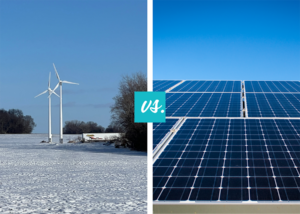By Hervé Maumus-Hue
Managing a perfect growing environment is challenging and is the topic of much research. We know that the environment dictates the efficiency of these chemical and physical processes/reactions. As shown below, the environment can be divided into 9 main parameters called the nine cardinal parameters: CO2, temperature, humidity, light, wind, oxygen in the roots system, nutrients, water, and root-zone temperature. If only one is neglected, it can have a huge impact on plant health.
However, it is really important to understand why and how those parameters can change during the full life cycle of a crop. This can be achieved with basic physics laws such as the first law of thermodynamics. You probably know that quote from Einstein: “Energy cannot be destroyed or created. It can only be transformed from one form to another.” If you know the energy that your canopy is getting from outside and few other parameters you can approximate the transpiration rate and therefore the irrigation needed for your crop.
That’s why it is crucial to monitor and control the environment around your canopy to optimize the chances for a successful growth.
Energy Balance
When a leaf, plant, and/or canopy receives light during a summer, sunny day, the power density can reach approximately 1000 W/m² (equivalent to PPFD @ 2100 µmol.m-2.s-1). You don’t necessarily need to understand these numbers.
What is important to understand is that a small portion of this energy will be actually used for photosynthesis. In fact this reaction/process has such a low efficiency (approximately 2 to 5% in growing conditions) that most part of the energy intake needs to be exhausted. Otherwise internal plants’ temperature would increase and impact their growth.
How do the plants cool themselves then? By transpiration, conduction and convection.
- Transpiration & Stomatal conductance
This topic could be detailed with a lot of information but let’s keep it simple.
Transpiration is the amount of water evaporated from the stomata on the leaves. The evaporation of water releases from 2.25 to 2.55 MegaJoules per Liter of heat (resp. rated at 0°C to 100°C). This means that by evaporating, the leaf is cooling itself. When the leaf evaporates the equivalent of one liter of water, the energy transferred is approximately 2.45 MJ. As said before, photosynthesis takes a marginal amount of water because of the low efficiency of the reaction. However, this water will be used for transpiration.
This is why, under sunny conditions, plants need more water than cloudy conditions; the intake of energy is higher, therefore the need to release energy to get the balance is higher.

Stomata open and close for gas and water exchanges as mentioned above. The ability of the stomata to open is called conductance and helps leaves get rid of heat by transpiration when the water evaporates.
There is no instrument that can measure this easily. The closest measurement used is Vapor Pressure Deficit (VPD). It’s based on air temperature at canopy level, relative humidity at canopy level and leaf or canopy temperature (for more details please see the blog about VPD).
Also, because of its biological nature, stomatal conductance is hard to predict. This is why understanding and measuring the other pieces of the equations (wind, light, CO2 etc) is really important. This allows you to deduce, build models, and predict the ability of your plants to actually transpire.
Most importantly, you can predict and estimate the irrigation needed for your plant to increase water use efficiency.
Because 70% of the world’s water [1], 80% in the United States of America’ [2] water is used for agriculture, it is important to understand, model, and optimize water use.
- Conduction and Convection (Physics)
Conduction and convection are also important processes and depend mainly on leaf width and wind speed. This is a thermal exchange between the leaf and the direct surrounding air. If there is no wind, a boundary layer is created. This layer constituted by static air can be seen as insulation. Just think about the air between two layers of glass for windows. The thermal conductivity of the air is so low that it makes air one of the best natural insulators in the world.
What happens if the leaf is insulated? It can not get rid of its heat (by conduction and convection). It doesn’t affect transpiration directly, however, it increases the need of transpiration to balance the energy, drawing more water, and potentially stressing out the plant.
Conclusion:
Getting healthy plants can be easy for people with green thumb, because they can usually follow their gut when it comes to taking care of plants.
However, considering the aforementioned principles, you can actually quantify your crop’s requirements, be guided by actual numbers and have a greater likelihood of growing successfully.
Sources:
[1] http://www.oecd.org/agriculture/topics/water-and-agriculture/).
[2]https://www.ers.usda.gov/topics/farm-practices-management/irrigation-water-use/#:~:text=Agriculture%20is%20a%20major%20user,percent%20in%20many%20Western%20States











